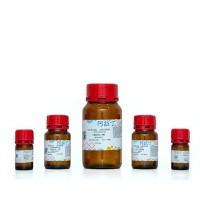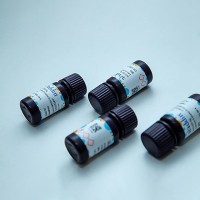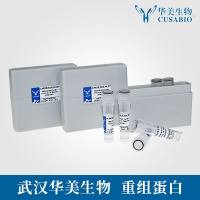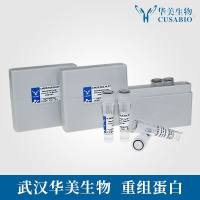Functional Stem Cell Integration Assessed by Organotypic Slice Cultures
互联网
- Abstract
- Table of Contents
- Materials
- Figures
- Literature Cited
Abstract
Re?formation or preservation of functional, electrically active neural networks has been proffered as one of the goals of stem cell?mediated neural therapeutics. A primary issue for a cell therapy approach is the formation of functional contacts between the implanted cells and the host tissue. Therefore, it is of fundamental interest to establish protocols that allow us to delineate a detailed time course of grafted stem cell survival, migration, differentiation, integration, and functional interaction with the host. One option for in vitro studies is to examine the integration of exogenous stem cells into an existing active neuronal network in ex vivo organotypic cultures. Organotypic cultures leave the structural integrity essentially intact while still allowing the microenvironment to be carefully controlled. This allows detailed studies over time of cellular responses and cell?cell interactions, which are not readily performed in vivo. This unit describes procedures for using organotypic slice cultures as ex vivo model systems for studying neural stem cell and embryonic stem cell engraftment and communication with CNS host tissue. Curr. Protoc. Stem Cell Biol. 23:2D.13.1?2D.13.26. © 2012 by John Wiley & Sons, Inc.
Keywords: organotypic culture; striatum; brainstem; roller drum; Stoppini; neural stem cells; engraftment; transplantation; integration; interaction; neuroprotection
Table of Contents
- Introduction
- Basic Protocol 1: Organotypic Cultures—Interface Method—Brainstem
- Basic Protocol 2: Organotypic Cultures—Roller Drum Method—Striatum/Brainstem
- Basic Protocol 3: Neural and Embryonic Stem Cell Preparation
- Basic Protocol 4: Time‐Lapse Calcium Imaging
- Basic Protocol 5: Dye Spread to Investigate Direct Intercellular Connections
- Support Protocol 1: Propidium Iodide Staining
- Reagents and Solutions
- Commentary
- Literature Cited
- Figures
Materials
Basic Protocol 1: Organotypic Cultures—Interface Method—Brainstem
Materials
Basic Protocol 2: Organotypic Cultures—Roller Drum Method—Striatum/Brainstem
Materials
Basic Protocol 3: Neural and Embryonic Stem Cell Preparation
Materials
Basic Protocol 4: Time‐Lapse Calcium Imaging
Materials
Basic Protocol 5: Dye Spread to Investigate Direct Intercellular Connections
Materials
Support Protocol 1: Propidium Iodide Staining
Materials
|
Figures
-
Figure 2.D1.1 Dissection technique for the Stoppini‐interface method—brainstem. (A ) Use a scalpel to cut through the skull; (B ) the dissected brain is placed on a sterile filter paper on the McIlwain tissue chopper; (C ) place the brain on the filter paper and orient it so that the medulla will be cut first and the cerebellum is up; (D ) separate the slices using two spatulas—be very gentle; (E ) transfer the slices with the correct level, from the Petri dish to the insert membranes; (F ) remove all medium that is on top of the insert membrane, but keep 1 ml underneath it. View Image -
Figure 2.D1.2 Stoppini‐interface method. Brain slices prepared from fetal or neonatal rodents are maintained in culture at the interface between air and a culture medium. Brain, cerebellar, or brainstem slices are placed on a sterile, transparent, and porous membrane and kept in Petri dishes in an incubator. View Image -
Figure 2.D1.3 Morphological integrity of the organotypic auditory brainstem slice—300‐µm thick brainstem slices monocultured for periods of 1 day up to 3 weeks using the Stoppini method. The slices comprise the cochlear nucleus (CN). Panel (A ) illustrates a brainstem slice maintained in culture for 1 day. Note the sharp morphological integrity of the slice including the area of the cochlear nucleus. In panels (B ), (C ), and (D ), the slices were cultured for 1, 2, and 3 weeks, respectively. Due to spread of the tissue into the surrounding culture medium, the thickness of the slices eventually thinned down to about 150 µm, but with well preserved morphology. Scale bar = 500 µM. Figure 2D.13.3 from Thonabulsombat et al. (). View Image -
Figure 2.D1.4 With the Stoppini method, organotypic brainstem nucleii are preserved. (A ‐I ) Beta‐tubulin III (Tuj1) expression in brainstem slice cultures from mice and rats exhibit preserved cytoarchitectural organization after culturing ex vivo. At the slice edges, Tuj1 negative cells are seen due to the reactive gliosis after chopping and migration of these (GFAP positive) cells. A, B, D, and G focus on the ventrolateral region, and C, F, and I are higher magnifications of these areas. E and H show expression of Tuj1 in distinct cell groups around the 4th ventricle, indicated by hatched lines. DAPI (4′,6‐diamidino‐2phenylindole); marks all nuclei blue. View Image -
Figure 2.D1.5 Roller drum method organotypic striatal slice. (A ) Striatum culture after 1 day in culture has an opaque appearance and distinct border. (B ) Subsequently, the organotypic slice thins down and spreads out during increasing time in culture to a multilayer of cells (2‐ to 5‐cell layer), with less distinct borders. (C ) Beta‐tubulin III (Tuj1, red) expression in striatum slice culture after 7 DIV. Panels A and B modified from Jäderstad et al. (). View Image -
Figure 2.D1.6 Dye injection and intercellular connections. The functionality of the gap‐junctional couplings between graft and host cells can be confirmed by Lucifer Yellow (LY) dye transfer experiments. Shown here is a grafted cell, recognized by GFP expression, that is whole‐cell patch clamped using standard electrophysiological techniques (A ) with a glass pipet filled with the gap‐junctional permeable dye Lucifer Yellow. Dye spread to neighboring organotypic culture cells was studied with subsequent three‐dimensional reconstruction (B ). The asterisk in (A) marks the patching pipet. The white arrows in (A and B) mark the same cell. Scale bars are 20 µM in A and B. Figure 2D.13.6B is partly adapted from Jäderstad et al. (). View Image -
Figure 2.D1.7 Calcein dye transfer. Two exogenous murine neural stem cells (NSCs) filled with the gap junction‐permeable dye calcein (green) and the gap junction‐impermeable dye DiI (red) following engraftment to an organotypic striatal tissue culture. Cell nuclei are displayed by DAPI nuclear counterstain (blue). Already after 4 hr, engrafted NSCs had formed gap‐junctional couplings to the host cells, indicated by the spread of calcein from NSCs to surrounding cells. These couplings allowed early functional and beneficial interactions with the host even before electrophysiologically mature neuronal differentiation. See Jäderstad et al. (). View Image -
Figure 2.D1.8 Grafted neural stem cells survive and integrate throughout the organotypic culture. A striatal organotypic culture after 7 DIV. Neural stem cells (C17.2‐NT3‐GFP+) grafted within 1 mm from the slice migrated and integrated into the striatal slice. Grafted neural stem cells recognized by GFP+ fluorescence (green). Although many of the surrounding host striatal cells in this area express GFAP (red), none of the engrafted NSCs expressed this marker for immature NSC and reactive gliosis. Nuclear stain DAPI (blue). DAPI: 4′,6‐diamidino‐2‐phenylindole; GFAP: glial fibrillary acidic protein; NSC: neural stem cell; GFP: green fluorescent protein. Scale bar, 20 µm. View Image
Videos
Literature Cited
| Literature Cited | |
| Adams, S.R. 2010. How calcium indicators work. Cold Spring Harb. Protoc. 2010:pdb top70. | |
| Araque, A., Parpura, V., Sanzgiri, R.P., and Haydon, P.G. 1999. Tripartite synapses: Glia, the unacknowledged partner. Trends Neurosci. 22:208‐215. | |
| Baker, B.J., Kosmidis, E.K., Vucinic, D., Falk, C.X., Cohen, L.B., Djurisic, M., and Zecevic, D. 2005. Imaging brain activity with voltage‐ and calcium‐sensitive dyes. Cell. Mol. Neurobiol. 25:245‐282. | |
| Benninger, F., Beck, H., Wernig, M., Tucker, K.L., Brustle, O., and Scheffler, B. 2003. Functional integration of embryonic stem cell‐derived neurons in hippocampal slice cultures. J Neurosci. 23:7075‐7083. | |
| Berridge, M.J. 2009. Inositol trisphosphate and calcium signalling mechanisms. Biochim. Biophys. Acta 1793:933‐940. | |
| Björk, L. 2003. Staining protocol for superantigen‐induced cytokine production studied at the single‐cell level. Methods Mol. Biol. 214:165‐184. | |
| Brady Trexler, E., Bukauskas, F.F., Bennett, M.V.L., Bargiello, T.A., and Verselis, V.K. 1999. Rapid and direct effects of pH on connexins revealed by the connexin46 hemichannel preparation. J. Gen. Physiol. 113:721‐742. | |
| Chintawar, S., Hourez, R., Ravella, A., Gall, D., Orduz, D., Rai, M., Bishop, D.P., Geuna, S., Schiffmann, S.N., and Pandolfo, M. 2009. Grafting neural precursor cells promotes functional recovery in an SCA1 mouse model. J. Neurosci. 29:13126‐13135. | |
| Duport, S., Millerin, C., Muller, D., and Correges, P. 1999. A metallic multisite recording system designed for continuous long‐term monitoring of electrophysiological activity in slice cultures. Biosens. Bioelectron. 14:369‐376. | |
| Ek‐Vitorin, J.F. and Burt, J.M. 2005. Quantification of gap junction selectivity. Am. J. Physiol. Cell Physiol. 289:C1535‐C1546. | |
| El‐Fouly, M.H., Trosko, J.E., and Chang, C.‐C. 1987. Scrape‐loading and dye transfer: A rapid and simple technique to study gap junctional intercellular communication. Exp. Cell Res. 168:422‐430. | |
| Flax, J.D., Aurora, S., Yang, C., Simonin, C., Wills, A.M., Billinghurst, L.L., Jendoubi, M., Sidman, R.L., Wolfe, J.H., Kim, S.U., and Snyder, E.Y. 1998. Engraftable human neural stem cells respond to developmental cues, replace neurons, and express foreign genes. Nat. Biotechnol. 16:1033‐1039. | |
| Gahwiler, B.H. 1981. Nerve cells in organotypic cultures. JAMA 245:1858‐1859. | |
| Gahwiler, B.H. 1988. Organotypic cultures of neural tissue. Trends Neurosci. 11:484‐489. | |
| Gahwiler, B.H., Capogna, M., Debanne, D., McKinney, R.A., and Thompson, S.M. 1997. Organotypic slice cultures: A technique has come of age. Trends Neurosci. 20:471‐477. | |
| Gahwiler, B.H., Thompson, S.M., and Muller, D. 1999. Preparation and maintenance of organotypic slice cultures of CNS tissue. Curr. Protoc. Neurosci. 9:6.11.1‐6.11.11. | |
| Glavaski‐Joksimovic, A., Thonabulsombat, C., Wendt, M., Eriksson, M., Palmgren, B., Jonsson, A., and Olivius, P. 2008. Survival, migration, and differentiation of Sox1‐GFP embryonic stem cells in coculture with an auditory brainstem slice preparation. Cloning Stem Cells 10:75‐88. | |
| Glavaski‐Joksimovic, A., Thonabulsombat, C., Wendt, M., Eriksson, M., Ma, H., and Olivius, P. 2009. Morphological differentiation of tau‐green fluorescent protein embryonic stem cells into neurons after co‐culture with auditory brain stem slices. Neuroscience 162:472‐481. | |
| Gogolla, N., Galimberti, I., DePaola, V., and Caroni, P. 2006a. Long‐term live imaging of neuronal circuits in organotypic hippocampal slice cultures. Nat. Protoc. 1:1223‐1226. | |
| Gogolla, N., Galimberti, I., DePaola, V., and Caroni, P. 2006b. Preparation of organotypic hippocampal slice cultures for long‐term live imaging. Nat. Protoc. 1:1165‐1171. | |
| Goldberg, G.S., Bechberger, J.F., and Naus, C.C. 1995. A pre‐loading method of evaluating gap junctional communication by fluorescent dye transfer. Biotechniques 18:490‐497. | |
| Gratzner, H.G. 1982. Monoclonal antibody to 5‐bromo‐ and 5‐iododeoxyuridine: A new reagent for detection of DNA replication. Science 218:474‐475. | |
| Guillery, R.W. 2002. On counting and counting errors. J. Comp. Neurol. 447:1‐7. | |
| Held, M., Schmitz, M.H., Fischer, B., Walter, T., Neumann, B., Olma, M.H., Peter, M., Ellenberg, J., and Gerlich, D.W. 2010. CellCognition: Time‐resolved phenotype annotation in high‐throughput live cell imaging. Nat. Methods 7:747‐754. | |
| Hofer, A.M. 2005. Another dimension to calcium signaling: A look at extracellular calcium. J. Cell Sci. 118:855‐862. | |
| Honig, M.G. and Hume, R.I. 1986. Fluorescent carbocyanine dyes allow living neurons of identified origin to be studied in long‐term cultures. J. Cell Biol. 103:171‐187. | |
| Hooper, M.L. 1982. Metabolic co‐operation between mammalian cells in culture. Biochim. Biophys. Acta 651:85‐103. | |
| Horikawa, K., Yamada, Y., Matsuda, T., Kobayashi, K., Hashimoto, M., Matsu‐ura, T., Miyawaki, A., Michikawa, T., Mikoshiba, K., and Nagai, T. 2010. Spontaneous network activity visualized by ultrasensitive Ca(2+) indicators, yellow Cameleon‐Nano. Nat. Methods 7:729‐732. | |
| Hu, Z., Ulfendahl, M., and Olivius, N.P. 2004a. Central migration of neuronal tissue and embryonic stem cells following transplantation along the adult auditory nerve. Brain Res. 1026:68‐73. | |
| Hu, Z., Ulfendahl, M., and Olivius, N.P. 2004b. Survival of neuronal tissue following xenograft implantation into the adult rat inner ear. Exp. Neurol. 185:7‐14. | |
| Imitola, J., Raddassi, K., Park, K.I., Mueller, F.J., Nieto, M., Teng, Y.D., Frenkel, D., Li, J., Sidman, R.L., Walsh, C.A., Snyder, E.Y., and Khoury, S.J. 2004. Directed migration of neural stem cells to sites of CNS injury by the stromal cell‐derived factor 1alpha/CXC chemokine receptor 4 pathway. Proc. Natl. Acad. Sci. U.S.A. 101:18117‐18122. | |
| Jäderstad, J., Ourednik, V., Snyder, E.Y., and Herlenius, E. 2003. Integration of exogenous stem cells into striatal organotypic cultures. Pediatric Res 54:594‐594. | |
| Jäderstad, J., Danielsson, L.M., Ourednik, V., Snyder, E.Y., and Herlenius, E. 2006. Communication via gap junctions underlies early functional interactions between grafted neural stem cells and the host. Exp. Neurol. 198:572. | |
| Jäderstad, J., Jäderstad, L.M., Li, J., Chintawar, S., Salto, C., Pandolfo, M., Ourednik, V., Teng, Y.D., Sidman, R.L., Arenas, E., Snyder, E.Y., and Herlenius, E. 2010a. Communication via gap junctions underlies early functional and beneficial interactions between grafted neural stem cells and the host. Proc. Natl. Acad. Sci. U.S.A. 107:5184‐5189. | |
| Jäderstad, L.M., Jäderstad, J., and Herlenius, E. 2010b. Graft and host interactions following transplantation of neural stem cells to organotypic striatal cultures. Regen. Med. 5:901‐917. | |
| Jäderstad, J., Brismar, H., and Herlenius, E. 2010c. Hypoxic preconditioning increases gap‐junctional graft and host communication. Neuroreport 21:1126‐1132. | |
| Jäderstad, J., Jäderstad, L.M., and Herlenius, E. 2011. Dynamic changes in connexin expression following engraftment of neural stem cells to striatal tissue. Exp. Cell Res. 317:70‐81. | |
| Lacar, B., Young, S.Z., Platel, J.‐C., and Bordey, A. 2011. Gap junction‐mediated calcium waves define communication networks among murine postnatal neural progenitor cells. Eur. J. Neurosci. 34:1895‐1905. | |
| Li, J., Imitola, J., Snyder, E.Y., and Sidman, R.L. 2006. Neural stem cells rescue nervous Purkinje neurons by restoring molecular homeostasis of tissue plasminogen activator and downstream targets. J. Neurosci. 26:7839‐7848. | |
| Lichtman, J.W. and Conchello, J.‐A. 2005. Fluorescence microscopy. Nat. Methods 2:910‐919. | |
| Loewenstein, W.R. 1979. Junctional intercellular communication and the control of growth. Biochim. Biophys. Acta 560:1‐65. | |
| Lu, H.X., Levis, H., Liu, Y., and Parker, T. 2011. Organotypic slices culture model for cerebellar ataxia: Potential use to study Purkinje cell induction from neural stem cells. Brain Res. Bull. 84:169‐173. | |
| Lu, P., Jones, L.L., Snyder, E.Y., and Tuszynski, M.H. 2003. Neural stem cells constitutively secrete neurotrophic factors and promote extensive host axonal growth after spinal cord injury. Exp. Neurol. 181:115‐129. | |
| Lu, Y.B., Iandiev, I., Hollborn, M., Korber, N., Ulbricht, E., Hirrlinger, P.G., Pannicke, T., Wei, E.Q., Bringmann, A., Wolburg, H., Wilhelmsson, U., Pekny, M., Wiedemann, P., Reichenbach, A., and Kas, J.A. 2011. Reactive glial cells: Increased stiffness correlates with increased intermediate filament expression. FASEB J. 25:624‐631. | |
| Montero Dominguez, M., Gonzalez, B., and Zimmer, J. 2009. Neuroprotective effects of the anti‐inflammatory compound triflusal on ischemia‐like neurodegeneration in mouse hippocampal slice cultures occur independent of microglia. Exp. Neurol. 218:11‐23. | |
| Neher, E. 1995. The use of fura‐2 for estimating Ca buffers and Ca fluxes. Neuropharmacology 34:1423‐1442. | |
| Oliver, A.E., Baker, G.A., Fugate, R.D., Tablin, F., and Crowe, J.H. 2000. Effects of temperature on calcium‐sensitive fluorescent probes. Biophys. J. 78:2116‐2126. | |
| Opitz, T., Scheffler, B., Steinfarz, B., Schmandt, T., and Brustle, O. 2007. Electrophysiological evaluation of engrafted stem cell‐derived neurons. Nat. Protoc. 2:1603‐1613. | |
| Ourednik, J., Ourednik, V., Lynch, W.P., Schachner, M., and Snyder, E.Y. 2002. Neural stem cells display an inherent mechanism for rescuing dysfunctional neurons. Nat. Biotechnol. 20:1103‐1110. | |
| Park, K.I., Hack, M.A., Ourednik, J., Yandava, B., Flax, J.D., Stieg, P.E., Gullans, S., Jensen, F.E., Sidman, R.L., Ourednik, V., and Snyder, E.Y. 2006a. Acute injury directs the migration, proliferation, and differentiation of solid organ stem cells: evidence from the effect of hypoxia‐ischemia in the CNS on clonal “reporter” neural stem cells. Exp. Neurol. 199:156‐178. | |
| Park, K.I., Himes, B.T., Stieg, P.E., Tessler, A., Fischer, I., and Snyder, E.Y. 2006b. Neural stem cells may be uniquely suited for combined gene therapy and cell replacement: evidence from engraftment of Neurotrophin‐3 (NT‐3)‐expressing stem cells in hypoxic–ischemic brain injury. Exp. Neurol. 199:179‐190. | |
| Parker, M.A., Anderson, J.K., Corliss, D.A., Abraria, V.E., Sidman, R.L., Park, K.I., Teng, Y.D., Cotanche, D.A., and Snyder, E.Y. 2005. Expression profile of an operationally‐defined neural stem cell clone. Exp. Neurol. 194:320‐332. | |
| Pasti, L., Volterra, A., Pozzan, T., and Carmignoto, G. 1997. Intracellular calcium oscillations in astrocytes: A highly plastic, bidirectional form of communication between neurons and astrocytes in situ. J. Neurosci. 17:7817‐7830. | |
| Phelan, M.C. 2007. Basic techniques in mammalian cell tissue culture. Curr. Protoc. Cell Biol. 36:1.1.1‐1.1.18. | |
| Radojevic, V. and Kapfhammer, J.P. 2004. Repair of the entorhino‐hippocampal projection in vitro. Exp. Neurol. 188:11‐19. | |
| Reig, R., Mattia, M., Compte, A., Belmonte, C., and Sanchez‐Vives, M.V. 2010. Temperature modulation of slow and fast cortical rhythms. J. Neurophysiol. 103:1253‐1261. | |
| Sanchez‐Ramos, J., Song, S., Dailey, M., Cardozo‐Pelaez, F., Hazzi, C., Stedeford, T., Willing, A., Freeman, T.B., Saporta, S., Zigova, T., Sanberg, P.R., and Snyder, E.Y. 2000. The X‐gal caution in neural transplantation studies. Cell Transplant. 9:657‐667. | |
| Sarnowska, A., Jurga, M., Buzanska, L., Filipkowski, R.K., Duniec, K., and Domanska‐Janik, K. 2009. Bilateral interaction between cord blood‐derived human neural stem cells and organotypic rat hippocampal culture. Stem Cells Dev. 18:1191‐1200. | |
| Scheffler, B., Schmandt, T., Schroder, W., Steinfarz, B., Husseini, L., Wellmer, J., Seifert, G., Karram, K., Beck, H., Blumcke, I., Wiestler, O.D., Steinhauser, C., and Brustle, O. 2003. Functional network integration of embryonic stem cell‐derived astrocytes in hippocampal slice cultures. Development 130:5533‐5541. | |
| Shuttleworth, T.J. and Thompson, J.L. 1991. Effect of temperature on receptor‐activated changes in [Ca2+]i and their determination using fluorescent probes. J. Biol. Chem. 266:1410‐1414. | |
| Snyder, E.Y., Deitcher, D.L., Walsh, C., Arnold‐Aldea, S., Hartwieg, E.A., and Cepko, C.L. 1992. Multipotent neural cell lines can engraft and participate in development of mouse cerebellum. Cell 68:33‐51. | |
| Spray, D.C., Ye, Z.C., and Ransom, B.R. 2006. Functional connexin “hemichannels”: A critical appraisal. Glia 54:758‐773. | |
| Stoppini, L., Buchs, P.A., and Muller, D. 1991. A simple method for organotypic cultures of nervous tissue. J. Neurosci. Methods 37:173‐182. | |
| Takita, K., Herlenius, E., Lindahl, S.G.E., and Yamamoto, Y. 1998. Age‐ and temperature‐dependent effects of opioids on medulla oblongata respiratory activity: An in vitro study in newborn rat. Brain Res. 800:308‐311. | |
| Taylor, J.H., Woods, P.S., and Hughes, W.L. 1957. The organization and duplication of chromosomes as revealed by autoradiographic studies using tritium‐labeled thymidine. Proc. Natl. Acad. Sci. U.S.A. 43:122‐128. | |
| Thomas, D., Tovey, S.C., Collins, T.J., Bootman, M.D., Berridge, M.J., and Lipp, P. 2000. A comparison of fluorescent Ca2+indicator properties and their use in measuring elementary and global Ca2+signals. Cell Calcium 28:213‐223. | |
| Thonabulsombat, C., Johansson, S., Spenger, C., Ulfendahl, M., and Olivius, P. 2007. Implanted embryonic sensory neurons project axons toward adult auditory brainstem neurons in roller drum and Stoppini co‐cultures. Brain Res. 1170:48‐58. | |
| Tonnesen, J., Parish, C.L., Sorensen, A.T., Andersson, A., Lundberg, C., Deisseroth, K., Arenas, E., Lindvall, O., and Kokaia, M. 2011. Functional integration of grafted neural stem cell‐derived dopaminergic neurons monitored by optogenetics in an in vitro Parkinson model. PloS One 6:e17560. | |
| Tsien, R.Y. 1998. The green fluorescent protein. Annu. Rev. Biochem. 67:509‐544. | |
| Uhlen, P. 2004. Spectral analysis of calcium oscillations. Sci. STKE 2004:l15. | |
| Uhlen, P. and Fritz, N. 2010. Biochemistry of calcium oscillations. Biochem. Biophys. Res. Comm. 396:28‐32. | |
| Wade, M., Trosko, J., and Schindler, M. 1986. A fluorescence photobleaching assay of gap junction‐mediated communication between human cells. Science 232:525‐528. | |
| Yu, C.C., Woods, A.L., and Levison, D.A. 1992. The assessment of cellular proliferation by immunohistochemistry: A review of currently available methods and their applications. Histochem. J. 24:121‐131. |






